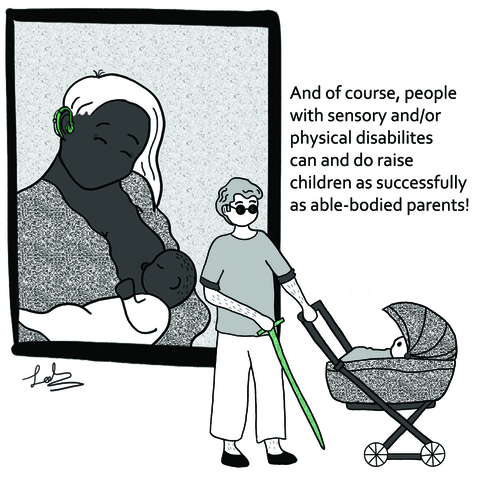Disability and Access to Sexual and Reproductive Rights
Access to sexual and reproductive health and rights is not only hindered by gender, race, and class. Ability and disability play a role in how patients are viewed, treated, and cared for. This comic by Leah Soweid touches upon some of the key issues with access for people with disabilities. Each comic slide is provided with a caption that reads the image and text.
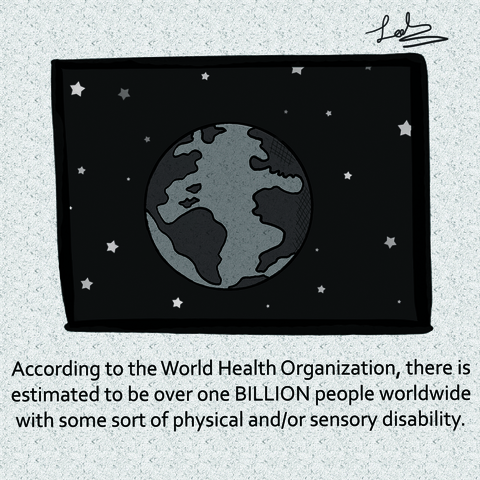
Slide 1:
[Illustration of globe]
text: According to World Health Organization, there is estimated to be over one billion people worldwide with some sort of physical and/or sensory disability.
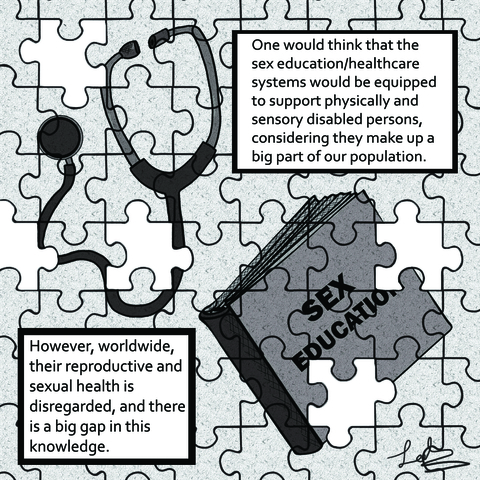
Slide 2: [Puzzle illustration of medical equipment and a sex education book]
text box 1: One would think that the sex education/ healthcare systems would be equipped to support physically and sensory disabled persons, considering they make a big part of the population.
text box 2: However, worldwide, their reproductive and sexual health is disregarded, and there is a big gap in this knowledge.
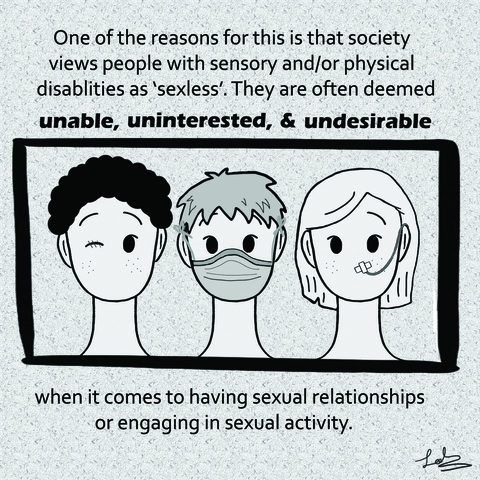
Slide 3: [illustration of three people with different visible disabilities in a frame]
text: One of the reasons for this is that society views people with physical and/or sensory disabilities as 'sexless'. They are often deemed unable, uninterested and undesirable when it comes to having sexual relationships or engaging in sexual activity.
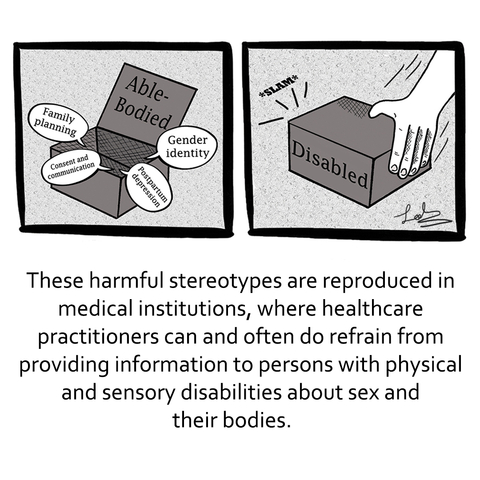
Slide 4: [Illustration of two boxes next to each other. The first is labeled "Able-bodied" and is open, with speech bubbles that read the following: "Family planning", "consent and communication", "gender identity", and "postpartum depression". The second is labeled "disabled" and is slammed shut]
text: These harmful stereotypes are reproduced in medical institutions, where healthcare practitioners can and do refrain from providing information to persons with physical and sensory disabilities about sex and their bodies.
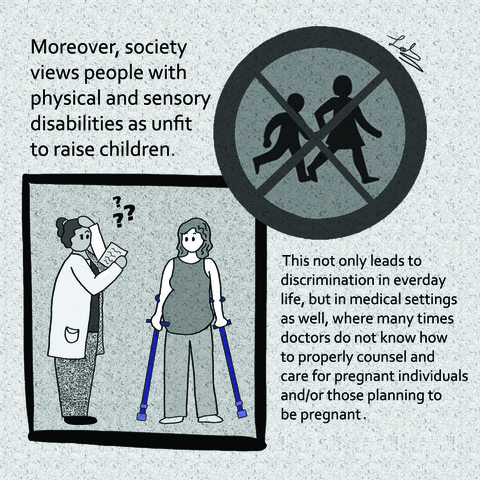
Slide 5: [Illustration of person with two crutches standing in front of a doctor who seems confused while reading the patient's report]
text: Morever, society views people with sensory and physical disabilities as unfit to raise children. This not only leads to discrimination in every day life, but in medical settings as well, where many times doctors do not know how to properly counsel and care for pregnant individuals and/or those planning to be pregnant.
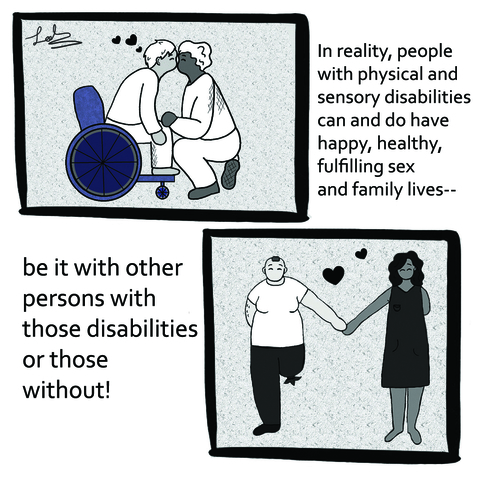
Slide 6: [First illustration shows a couple kissing, with one of them in a wheelchair. The second illustration shows a couple holding hands, with one of them with an amputated leg]
text: In reality, people with physical and sensory disabilities can and do have happy, healthy and fulfilling sex and family lives - be it with other persons with those disabilities or without.
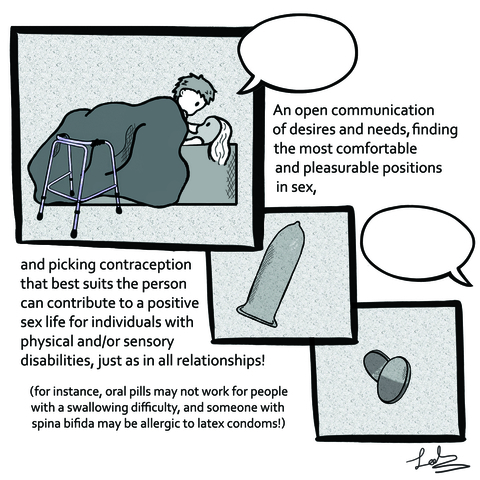
Slide 7: [First illustration shows two people having sex on a bed with a wheelchair next to it. Second illustration is of a condom. Third illustration is of the contraceptive pill]
text: An open communication of desires and needs, finding the most comfortable and pleasurable positions in sex, and picking contraception that best suits the person can contribute to a positive sex life for individuals with physical and/or sensory disabilities, just as in all relationships! (For instance, oral pills may not work for people with a swallowing difficulty, and someone with spina bifida may be allergic to latex condoms!)
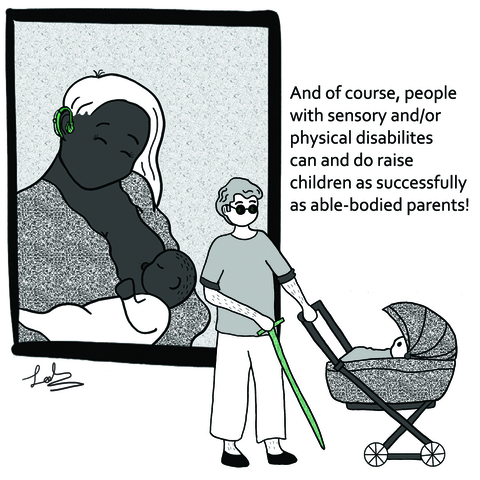
Slide 8: [First illustration is of a deaf mother breastfeeding a child. Second illustration is of a blind person walking with a baby pram]
text: And of course, people with sensory and/or physical disabilities can and do raise children as successfully as able-bodied parents!
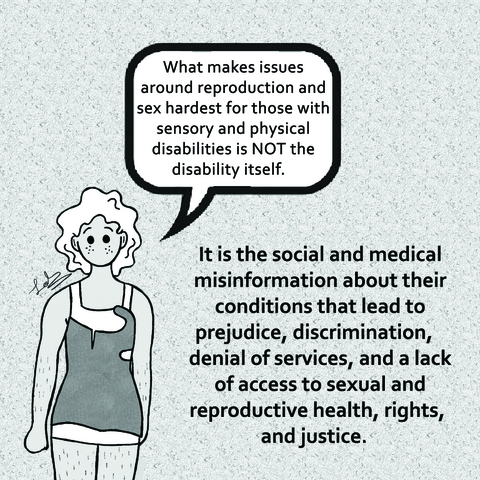
Slide 9: [Illustration of a person with a body cast, with a speech bubble that reads: "What makes issues around reproduction and sex hardest for those with sensory and physical disabilities is not the disability itself".]
text: It is the social and medical misinformation about their conditions that lead to prejudice, discrimination, denial of services, and a lack of access to sexual and reproductive health, rights and justice.
